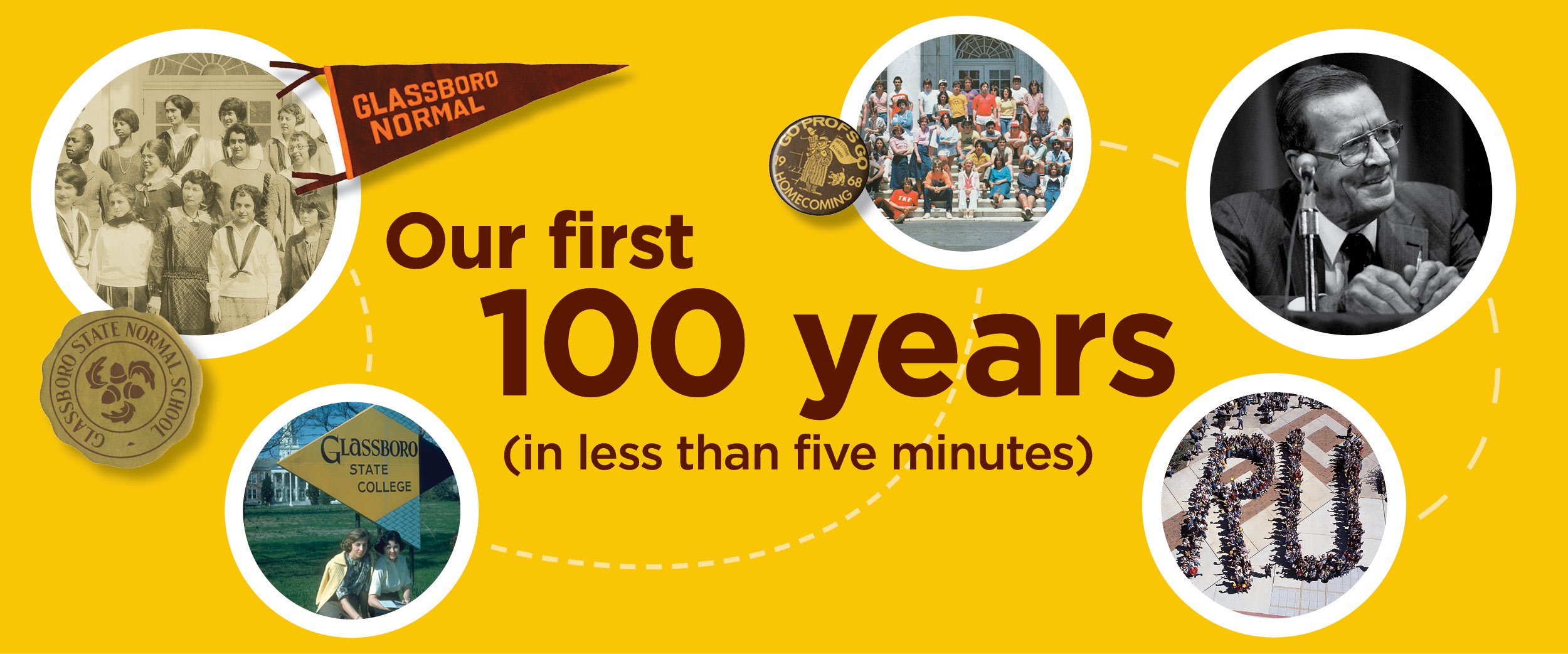
Four years after authorizing the creation of a new state normal school south of Trenton, the New Jersey Legislature appropriated $300,000 needed to build a facility to train elementary school teachers.
In 1917, in a bid to establish their town as the site of South Jersey’s normal school, 107 Glassboro-area residents, community leaders and business leaders raised more than $7,000 to purchase 25 acres of the Whitney Tract, located west of the borough’s business district. The people offered the property to the state for free if it selected Glassboro as the site.
Their support, along with the site’s beauty, rail service and up-to-date electric light, gas and water utilities, persuaded the selection committee that Glassboro was the perfect location for the new school.
In 1923, Glassboro Normal School opened with 236 students. Dr. Jerohn J. Savitz, the institution's principal and later first president, supervised the school’s 16 faculty and every aspect of the new school. He expanded the curriculum and a four-year program began in 1934. The school became known as New Jersey State Teachers College at Glassboro in 1937.
The second president, Dr. Edgar F. Bunce, guided the college through the crisis of World War II. He helped rebuild enrollment, expanded curriculum and encouraged students and faculty to participate more in planning and developing life on campus.
Dr. Thomas E. Robinson, the third president, expanded the curriculum with more graduate programs and opportunities in business and humanities. In 1958, the school became known as Glassboro State College. Dr. Robinson directed the college’s first major building boom, opening academic and residential buildings to serve enrollment that would grow during his presidency from 500 to 3,500. During his presidency, the College received worldwide attention when it hosted a historic Summit between President Lyndon Johnson and Soviet Premier Aleksei Kosygin at Hollybush in 1967.
As the fourth president, Dr. Mark M. Chamberlain guided the college through ’70s-era turmoil and a new phase of growth as enrollment doubled and GSC became a multi-purpose institution. Four academic divisions grew into schools and, in 1969, the University opened a campus in Camden.
Dr. Herman D. James became the fifth president in 1984, serving during yet another period of dramatic growth. In July 1992, Henry and Betty Rowan pledged $100 million to the institution, then the largest gift ever to a public college or university. Dr. James led the initial transformation made possible by the gift and was responsible for the construction of Campbell Library, the Student Recreation Center and Rowan Hall.
Under Dr. James’ leadership, the College established the first doctoral program among the state's public colleges, earned university status and became known as Rowan University.
Dr. Donald J. Farish became the sixth president in 1998, leading academic and student support improvements and the launch of Rowan Boulevard’s development. His tenure saw the purchase of 600 acres for the development of the West Campus; the construction and opening of Science Hall, James Hall and the South Jersey Technology Park; as well as the founding of Cooper Medical School of Rowan University in partnership with Cooper University Health Care.
Dr. Ali A. Houshmand became Rowan’s seventh president in 2012. He has encouraged a visionary, entrepreneurial approach while expanding enrollment, academic programs, research and partnerships. Under his leadership, Rowan opened and received accreditation for Cooper Medical School; acquired its second medical school, now called Rowan-Virtua School of Osteopathic Medicine; earned Carnegie’s R2 designation as an institution with high research activity; completed the Rowan Boulevard development project; and established the Virtua Health College of Medicine & Life Sciences of Rowan University. In April 2023, Rowan broke ground on New Jersey’s first veterinary school, the Shreiber School of Veterinary Medicine.
During Houshmand’s presidency, Rowan has doubled enrollment, while undertaking ambitious and productive public-private projects. It continues to build national recognition.
As it enters its second century, Rowan University will continue to create opportunities and help improve the lives of everyone it serves.
And, with each graduate, its story is still being told.